This guide includes step by step instructions for U.S. Citizens on how to obtain your Temporary Investors Visa in Ecuador — a process that I recently completed. Questions? Suggestions? Drop a comment at the bottom of this post. This post was last updated 3-26-2023.
Table of Contents
- Introduction
- What is an Ecuador investment visa?
- How much does an investment visa cost in Ecuador?
- What's the minimum investment in Ecuador?
- Do I have to physically be in Ecuador to obtain my investment visa?
- Which government department can help me obtain an investment visa in Ecuador?
- What do I need to apply for my investment Visa in Ecuador?
- Which Ecuadorian Banks can I work with?
- How to open a Poliza (CD) a JEP Cooperativa in Ecuador
- How To Wire Transfer $45,000 to JEP
- Federal & State Background Checks
- What is an Apostille?
- Translating and Notarizing Documents in Ecuador
- Movimientos Migratorios document
- Applying for your visa
- Conclusion
- Questions / Suggestions
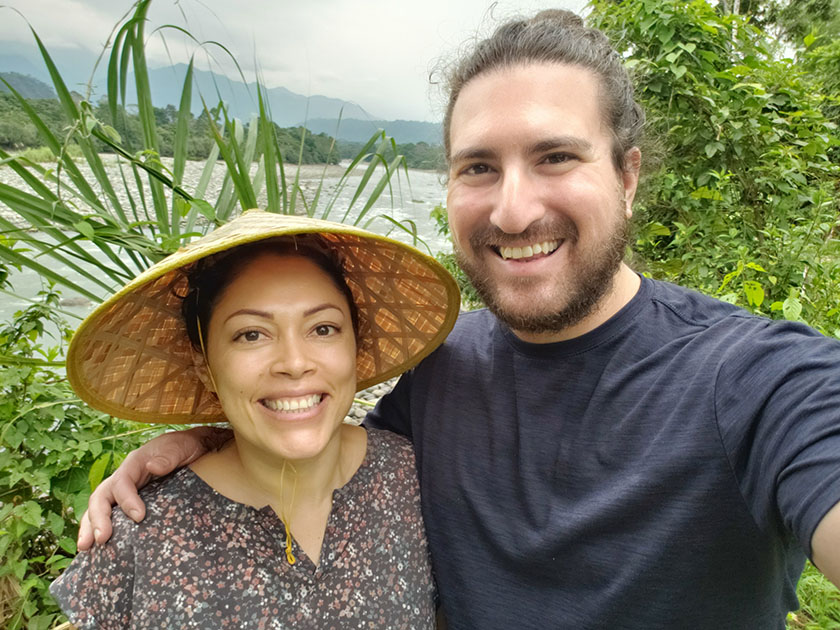
Introduction
I put this guide together after recently obtaining my Residencia Temporal Inversionista (ie: Investor's Visa) in Ecuador. I screwed up the process initially and had to return back to USA to obtain the paperwork that I lacked. It was a costly and unwelcomed mistake that I hope to help you avoid with this guide.
This guide can help you obtain your investors visa in just one trip to Ecuador. No back-and-forth trips for you!
FYI – I did NOT work with an attorney or visa agency to obtain my investors visa. I initially attempted to work with an immigration attorney, but none of them wrote back! I contacted several of the “popular” immigration attorneys that appear at the top of Google search and/or are recommended by well known bloggers, but not a single one of them contacted me back after several attempts to reach them. Fuck em! I learned the process myself, and so can you.
The official instructions from Ecuador can be found here. This guide below will recap those official instructions and also offer further explanation on areas that Ecuador's official website glosses over (or doesn't cover).
DISCLAIMER: I am NOT an attorney or official representative of either USA or Ecuador. I'm just a traveler who recently obtained my investment visa and am trying to make your life easier by sharing the process. I've done my best to provide timely and factual information in this post, but things can change that are outside of my control, and I can't guarantee the accuracy or validity of the information in this guide. Use the info with caution and at your own risk. That being said, I'll keep it up to date as best I can.
IMPORTANT ABOUT TIMELINE: Pay close attention to how long things take in this guide. For example, scheduling an appointment to obtain your Visa may take several months. Transferring money to your bank account could take several weeks. Obtaining your background checks and having them apostilled could take several weeks as well. You'll probably want to overlap some of these activities. For example, if you know you'll be in Ecuador in a few months, go ahead and schedule the Visa appointment ahead of time. You can also start the background check and money transfer processes at the same time. Everyone's schedule is different, so I won't spell out an exact timeline for you to follow in this guide, but be mindful of the fact that the things take time (especially the visa appointment) so plan ahead!
Let's get started. If you have any questions, drop a comment at the bottom of this post and I'll do my best to help you out. (Or I'll tell you that I don't know so that you can continue looking for the answer elsewhere.)
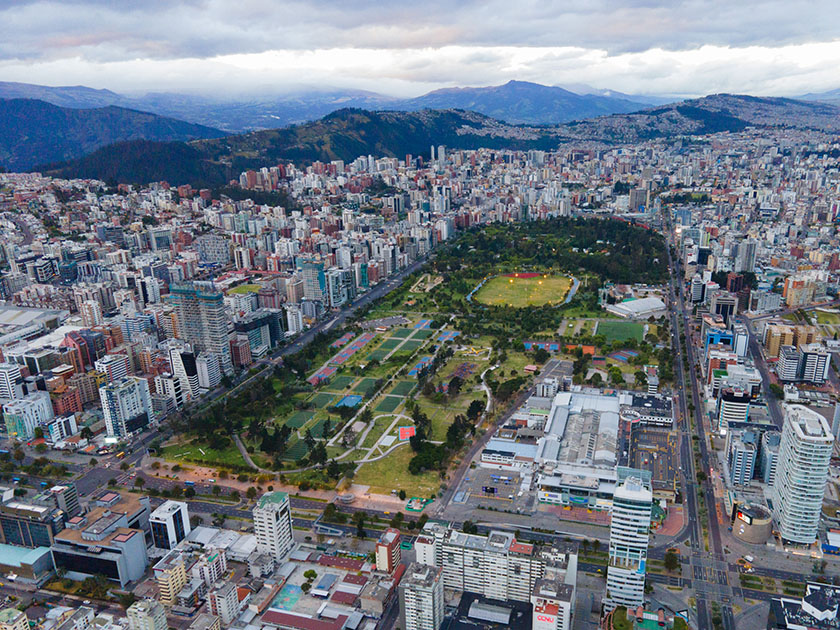
What is an Ecuador investment visa?
A Residencia Temporal Inversionista (ie: Investor's Visa) is a 2-year temporary residency visa that allows you to enter and leave Ecuador as often as you'd like and stay as long as you'd like during the 2 year window. There are no restrictions on how much time you can spend in Ecuador or outside of the country during the 2 years, unlike other forms of residency visas.
If you're going to spend less than 90 days a year in Ecuador, there's really no need for an investment visa. You can comfortably travel on a 90 day tourist visa with optional 90 day extensions if needed. On the flip side of the coin, if you plan on moving here and never leaving, you might prefer to go down the more traditional path of obtaining your residency, which requires that you remain in the country for the majority of your first two years here.
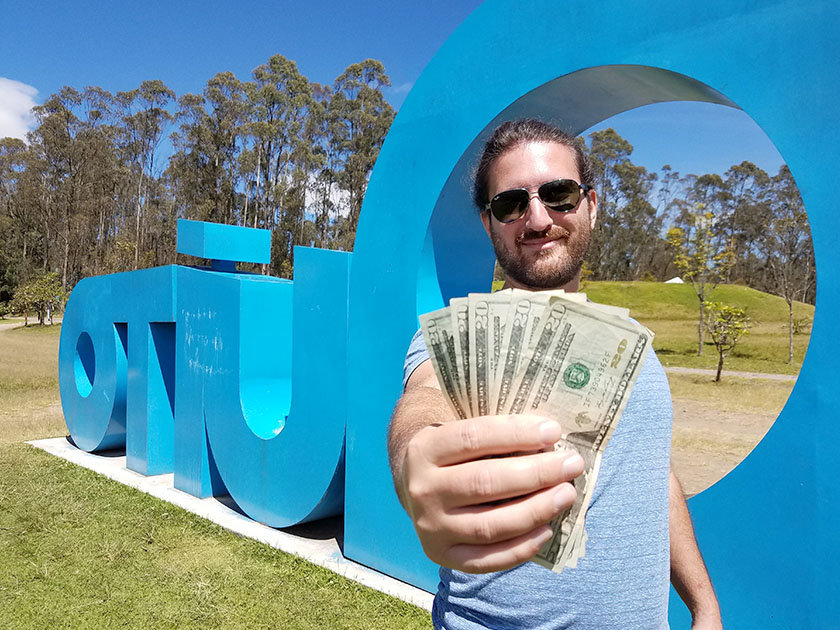
How much does an investment visa cost in Ecuador?
Here's a rough breakdown of how much it costs to obtain an investors visa in Ecuador. Your fees will vary based on several factors like your state, banks, translator, etc.
- $50 application fee
- $400 for the visa
- $150 translation services
- $50 notary services
- $100 background checks, apostilles, & postage
- $80 bank transfer fees (average)
- $5 movimientos migratorios document
- $10 random photocopies, folders, bank fees, & postage
- $45,000 minimum investment (details in next section)
The costs above of course do not include the travel and accommodation involved with coming to Ecuador and obtaining your visa, which hopefully I can help minimize for you with this guide (so that you don't have to go back and forth twice like me).
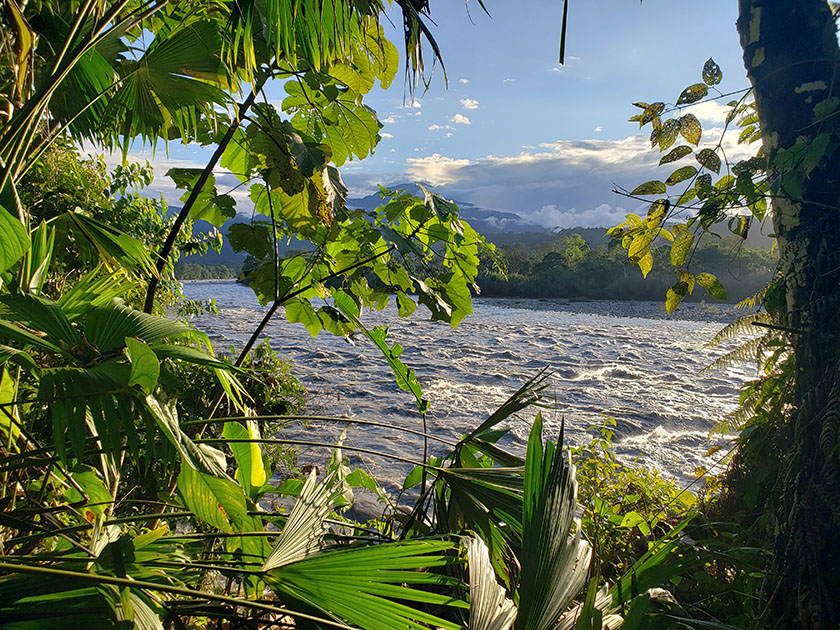
What is the minimum investment required in Ecuador?
An Ecuador Investment Visa requires a minimum investment of $45,000 USD into the country. When I first began the process in 2021, the requirement was $40,000. Then it became $42,500. Now it's $45,000. The amount is based on 100x the monthly minimum wage salary of Ecuadorians, which was previously $400/month before the new President Lasso increased the salario basico to $425/month in January 2022, and then again increased it to $450 in January 2023.
The salario basico will always go up in time. (Well, hopefully for the people of Ecuador it will.) However you'll be locked into the $45,000 investment rate as long as you renew your visa. For example, I have friends who invested $25,000 into Ecuador many years ago (back when the salario basico was $250/month), and they are able to renew their visa every two years based on their initial $25,000 investment.
In other words, they don't need to add more to their investment to keep up with the new rate, and neither will you. (At least that's the rule for now and has been for quite some time. Things could always change though.)
There are three options for where you can invest your $45,000:
1. Put the money into a Poliza account, which is like a CD, for a two year term. You'll earn interest on the money which you can compound or remove monthly. This guide will cover this method in detail.
2. Purchase a real estate investment with a tax assessed value of at least $45,000. Note that similar to USA, the market value (and/or purchase price) is often higher than the tax assessed value — and sometimes significantly higher in Ecuador. So purchasing a $45,000 property doesn't necessarily mean the tax value of that property will qualify you for the investment visa. For example, I recently purchased a property for $12,000 and the tax assessed value was $3,000. You could request a reassessment, but that would increase your taxes on the property, so it's a catch-22.
3. You can invest $45,000 into a business in Ecuador. I have no idea how this works and did not look into this option.
The rest of this guide is going to exclusively help you with obtaining your investment visa using Method #1 – Poliza Investment. Although there will be some overlap between this and the other methods.
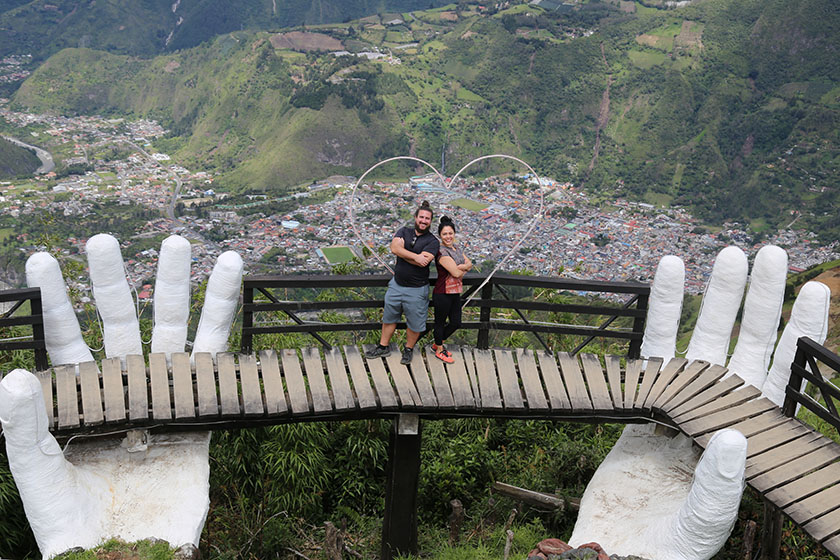
Do I have to physically be in Ecuador to obtain my investment visa?
At some point you'll have to be in Ecuador to open a bank account and obtain some paperwork from the government. However from there, you can either apply for your Investor Visa within Ecuador or via your local consulates office in USA. I'll provide both options below.
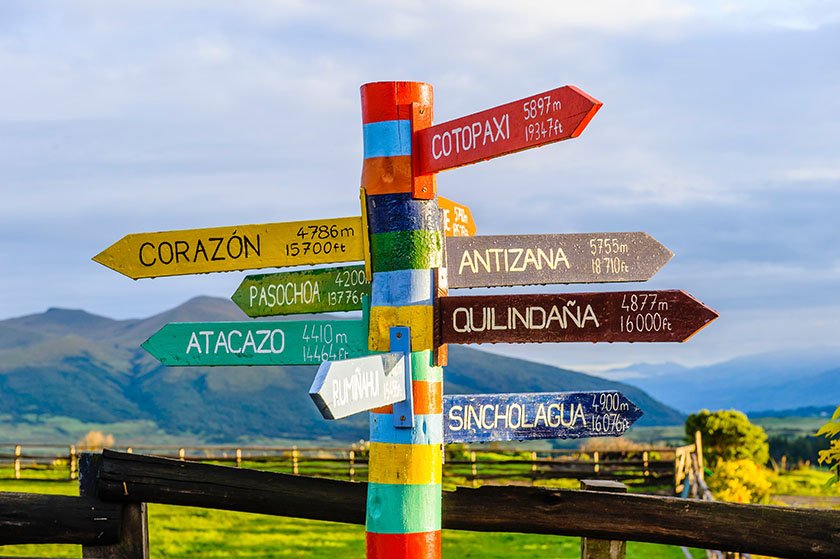
Which government department can help me obtain an investment visa in Ecuador?
*IN QUITO*
The office that handles issuing investment visas is the Ministerio de Relaciones Exteriores.
NOTE: There are TWO of these offices in Quito, but only the one in South Quito near Terminal Quitumbe offers the services you're looking for. It is located within the first floor of the:
Plataforma Gubernamental de Desarrollo Social (YES! Investor Visas)
Avenida Amaru Ñan junto a la Plaza Cívica, Quito 170146
02-2993200
EXT: 23007-23015-23002
https://goo.gl/maps/7iFnfxDXzRdJWPbV9
If you have questions about your existing immigration status, the office above CANNOT help you. You will have to speak to the friendly people at the office located below, which is about 30 minutes away near Parque Carolina in North Quito.
Migración (NO! They do not do immigration visas!)
RG66+MQH, Quito 170515
+59322439408
https://goo.gl/maps/XMpJVRi5wuDSD2AA7
UPDATE: *OUTSIDE OF QUITO*
Which cities in Ecuador can you apply for an investors visa?
I reached out to the Ecuador Expats Facebook Group and was informed that it's possible to apply for your investors visa in the following cities:
- Quito
- Guayaquil
- Machala
- Manta
- Azogues (near to Cuenca)
- Tulcán
However you can only obtain your cedula in Quito or Guayaquil.
*IN USA*
Your local consulates office in USA can also handle the process of obtaining an investors visa for you. However you'll need to have a bank account and poliza already opened in Ecuador in order to go this route.
This website shows where your local consulates offices are located:
https://www.cancilleria.gob.ec/2021/05/11/embajadas-y-consulados-en-el-exterior/
Each office has its own jurisdictions (by State) so you'll need to work with the one that handles your state. The website above displays each consulate's jurisdiction. For example, I'm a resident of North Carolina so I would have had to work with the Atlanta Consulate.
You'll use this website to begin your online application process: https://www.consuladovirtual.gob.ec/
Every consulate will begin the process using the website above, so you can go ahead and create an account on the site if you plan on applying for your visa within the USA.
WARNING: Results may vary in the USA. I attempted to obtain my visa via the Atlanta Consulate office, but no-one ever got back to me. I called several times, but the office was always closed when I called and the voicemail was always full. I e-mailed the address they offered on the website, but no-one ever wrote back. (My last e-mail was sent in Sep 2021, and it's now April 2022 and I've still never gotten a response. I only mention this so that you don't think I was being impatient and didn't get a response after a few days and called it quits.)
The rest of this tutorial will focus on obtaining your visa within Ecuador.
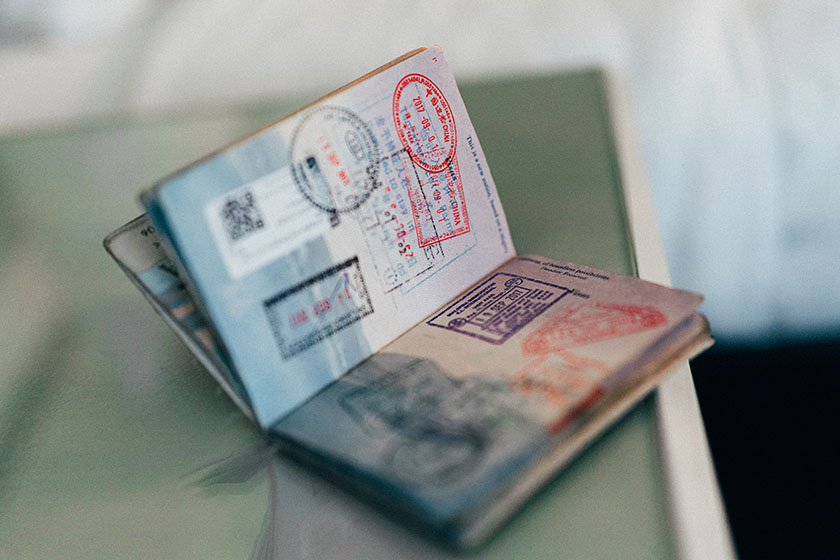
REQUIREMENTS: What do I need to apply for my investment Visa in Ecuador?
- Color passport sized photograph (2 x 2 inches | 5cm x 5cm) with white background. Don't smile (neutral face). Both eyes open.
- US Passport (Original) + Color Copy on 8.5 x 11 paper
- Criminal Background Checks from SBI (State) and FBI (Federal) – These need to be Apostilled (this is where I fucked up), translated into Spanish, and can be no older than 180 days when you apply for the visa. More on all this below.
- Fees: $50 for the Application and $400 for the Visa. These fees are paid in cash at the Ministerio de Relaciones Exteriores office AFTER they've approved all your paperwork.
- Verification of your $45,000 investment from the Central Bank of Ecuador. More on that below.
- Movimientos Migratorios document ($5) provided by the Migración office in North Quito. More on that below
- Formulario de Solicitud document which you can download here.
- Bank statements from the previous six months. More on that below.
- Translated and notarized (by Ecuadorian notaries) versions of your SBI and FBI Background Checks and Apostilles. More on that below.
- Notarized (but not translated) versions of your bank statements. Notarization cost me around $42 in total.
- You put all these papers into a blue folder that they sell outside the Ministerio de Relaciones Exteriores offices for $0.50.
- UPDATE 8-10-2022: It's come to my attention that you must also show PROOF OF INCOME to obtain your investor's visa. I'm not sure how much income you're required to show. The official documentation only says, “Proof of legal means of life that allow the subsistence of the applicant and his dependent family group.” I'd guess that it's either $450/month (which is the salario basico) or $800/month (which is the amount required for the pensioners visa). If you know for sure, drop a comment at the bottom of this post and let me know or e-mail [email protected] and I'll update the post. When I applied, I had to show 6 months worth of bank statements (which I noted above), however I mistakenly thought they were just checking to see where the $42,500 came from (which was the amount needed for the visa at the time). I didn't realize they were checking to see if I have income (which I do, so it didn't come up in convo). Recently a reader e-mailed me asking if the Investor's Visa had income requirements, which I didn't realize it had, but have since learned that it does. Sorry about the confusion.
- UPDATE 3-11-2023: Now someone else wrote me and said that proof of income is NOT required for investment visas. He got that info from an attorney. So at this point I'm not sure what correct answer is. Please drop a comment at the bottom of this post if you know.
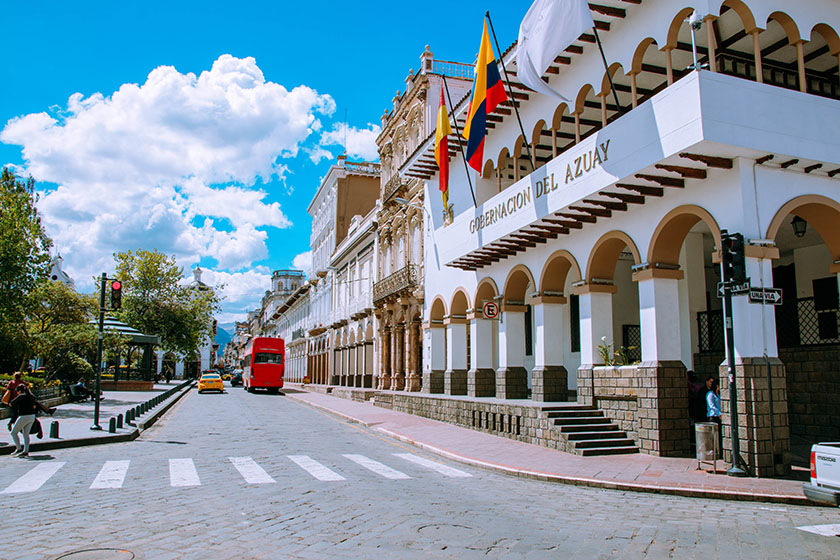
Which Ecuadorian Banks can I work with?
You'll be investing your money into a Póliza which is like an interest bearing CD. Even though the banks offer terms as short as 30 days, your investment visa requires a two year commitment, which is fine because you'll receive a higher interest rate.
Ecuador only allows you to invest with the following three banks:
- Pichincha (sucks)
- Pacifico (meh)
- JEP (yes)
Pichincha and Pacifico are the two official “banks” on that list, whereas JEP is classified as a “cooperativo” — which are like credit unions.
Last I checked, Pichincha and Pacifico were offering 3.75% interest on 2 years, and JEP was offering 8.0%, which is what I'm locked in at for my first two years.
Originally when I started this process 6 months ago, the minimum investment was $40,000 and JEP paid 8.5%, but by the time I finished, the minimum investment grew to $42,500 and JEP paid only offered 8.0%. Yay for me!
Be fair warned that other cooperativos in Ecuador can actually offer you a higher interest rate and will be ready to accept your money and lock you into a 2 year term — but YOU CANNOT WORK WITH THOSE OTHER BANKS. Only the three banks I mentioned above are recognized by the Ecuadorian government for investment visa purposes. For example, Cooperativo Tena, who I wanted to work with originally, offered me 10% interest and were ready to accept my investment. They were not aware of the rules surrounding the investment visa and thought I merely needed a poliza which they offer. Good thing I double checked!
I went with JEP for five reasons:
- That's who my girlfriend uses and she's had a great experience with them.
- They pay the highest interest rate of the three options available to me.
- I hate Pichincha. Every interaction with that banks requires a 1-2 hour wait, during which the security guards tell you that you can't be on your phone while you wait. So I'm just supposed to sit there for two hours staring at the wall like an asshole? I've also never received correct information from anyone I've spoken to at Pichincha about anything.
- I had never heard of Pacifico until I spoke to the Ministerio de Relaciones Exteriores, but at that point, I had already opened an account at JEP.
- JEP seems to be the most popular option among expats within the Ecuador Expat Facebook groups as well.
The only issue with JEP is that most things need to be done in-person with Ecuadorian banks, and JEP doesn't have locations everywhere like Pichincha. For example, there is not a JEP location where I live in Tena. The closest bank locations are Baños or Quito. However there are JEP ATMs here for me to pull out my interest each month. I'm in Quito often enough that hopefully it won't be a problem not having a JEP location here in Tena.
How to open a Poliza (CD) a JEP Cooperativa in Ecuador
First I visited a JEP branch in Quito and opened a savings account called cuenta de ahorros. Minimum $20 cash deposit to open, which they hold $10 forever that you can't access, as long as the account is open.
If you want a Debit Card, they charge $4.89 + $1.15/year which they deduct from your account. They print the card right there in the office and you can use it right away. I opted for a debit card so that I would not have to enter the bank each month to withdraw my interest (because as I mentioned, I don't have a JEP bank in Tena).
This cuenta de ahorros is the account that I first had to wire transfer my $42,500 to. Afterwards, I transferred (internally at JEP) from my cuenta de ahorros into a poliza account.
To open a cuenta de ahorros you need:
- Passport Original + Color Copy on 8.5 x 11 paper
- Electric or Utility Bills (most recent) showing where you live in Ecuador. The ones I showed didn't even have my name on them and that was still sufficient.
- Your Social Security number.
- Two local references in Ecuador – their name and phone number. I used my girlfriend and one of our friends as a reference. So if you don't have any friends, better make a couple real quick.
- The JEP representative will ask you what you do for a living, how much you make, etc.
- Sign some paperwork (always ask for copies). They're oddly anal about every signature looking identical to your passport signature. I had to re-sign some papers several times to make my signature look exactly like my passport signature.
- You receive a little book ledger that JEP takes very seriously, so hold onto it for the future or they'll charge you to make another. You'll also receive your debit card, which you can visit a JEP ATM right away and set a PIN Number for. For example, my PIN Number is… (hah, kidding!)
Now you're all set for the time being. The next step is to transfer money from your U.S. bank into your new cuenta de ahorros at JEP.
How To Transfer $45,000 to JEP
There are two methods of transferring money from your US bank account to your Ecuadorian bank account that I'll discuss today. The first is the easy method (Xoom), which I did, and the second is the more difficult method (wire transfer). I recommend that you use Xoom to facilitate the transfer, but I'll go over both methods below in case Xoom isn't available to you.
WARNING: Keep in mind that both of the methods outlined below involve sending large amounts from your US bank to Ecuador. Depending on your bank, you might need to get your account approved for these types of transactions. For example, with Wells Fargo, in order to send this much money internationally, I had to sign a document in person at my local branch and receive a tiny FOB device that gives me a code that changes every few minutes. Check with your bank before initiating any of this to make sure that they don't require any special permissions on your account.
Method #1 Xoom
Use the Xoom service, operated by PayPal, to transfer money to your US Bank account to your JEP Account.
JEP’s full name is Cooperativa de Ahorro y Crédito Juventud Ecuatoriana Progresista which shows up as Coop.Juv.Ecua Progresista LTDA in Xoom. This will come in handy when trying to find JEP in their list of banks.
Xoom max send limits are $25k/day and $50k/month, and costs up to $39.99/transfer depending on the amount (minimum $9.99/transfer). So it cost me about $80 to send the $42,500 in two batches, which was slightly more than a wire transfer, but I felt more comfortable about the process going from Wells Fargo to Xoom to JEP versus going from Wells Fargo to Pichincha to JEP. More on that below.
First Transfer: I tested the waters with a $500 transfer to ensure that it went through, prior to sending $25k. I used Doc's phone # because they required an Ecuadorian number to confirm the transfer, and I was in USA at the time and had my Ecuadorian number inactive. I also had to confirm my passport number with them to initiate this transfer. It went through without a hitch.
Second Transfer: This time I sent $25k, which is the the max for Xoom transactions. First it got held up and Xoom needed to verify my identity and income. Easy. I sent a copy of my drivers license and a 2020 tax return. They moved my account to “Level 3 Sending Limits”. Then the transfer got held again. I simply had to call and answer a few questions, verifying my address again, and telling them how much money I was planning to send this month and in the future. I said that I'd be sending $43k via 3 transactions this month, and then “I'm not sure how much I'd be using the service in the future.” But the Xoom representative insisted that I needed to give them an idea of my future usage, so I just said, “Okay, well let's just say 3 transactions a month then since I'm doing three this month”…. and she approved it.
Start to finish, the $25k took 13 days (including weekends), including the back and forth time involved with verifying my information.
Third Transfer: My third transaction was for $17,500. This transaction also required verifying practically the same information as the previous transaction. It took 11 days start to finish.
Method #2 – Wire Transfer
Next I'll walk you through the process of wire transferring money to Ecuador. This is the older and more traditional way to send money internationally.
You cannot wire transfer money directly to JEP because they don't have an international SWIFT code. Therefore you have to use Pichincha as a middle man. This is the same for all cooperativas in Ecuador.
Essentially you'll be wire transferring your money to JEP's general account at Pichincha, and then you e-mail JEP with the confirmation code after you transferred the money, informing them which JEP account to put it in. Sounds kind of risky as fuck and weird, but apparently that's the process. Here are instructions:
- Enter JEP's Account Name and Number (for their general Pichincha account) in the wire transfer initiation at your bank. You can probably initiate wire transfers on your phone via your bank app. Due to the amount, you'll most likely need to speak to your bank first to authorize such a large wire transfer. As I mentioned above, I use Wells Fargo and had to visit a branch in person to authorize wire transfers above $5k. Then they sent me a FOB electronic device that displays a code number to authenticate the wire transfer.
- Next enter Pichincha's SWIFT Number (as well as the FOB code if your bank requires this) and complete the transfer. There is a fee from your bank to transfer the money (Wells Fargo charges $40) and a fee from Pichincha to receive the money ($26) so you'll need to transfer a little more than $40k to cover the fees. Otherwise you'll fall short for your Poliza once the money finally reaches your JEP account. JEP does not charge a fee for receiving the the money from Pichincha, however, I'd transfer at least a few hundred dollars extra just to have some breathing room for random fees, and to have a little cash in your JEP account for random needs in the future.
- Send an e-mail to JEP with your Account Number, Name, Passport Number, Ecuador Address, Confirmation Number of the transfer (scanned and attached to e-mail), as well as a Justification Letter of your income or showing where the money came from. This could be a bank statement from the past 6 months for example, or if you sold a house, you can show the proceeds from the house. (I should do this.) Be sure to translate those papers. More on that below.
Justification Letters are required for sending more than $5k to Ecuador — which you are in this case. When I went through Xoom, they obtained the financial documents from me to provide to the bank. If doing a wire transfer, you'll need to provide this directly to the bank.
Moving from Ahorro to Poliza
Whichever method you used above to send money to Ecuador, once the process is over, JEP will have your money in your Ahorro account, and you just need to tell them to put it into a 2 year Poliza. Your interest rate is locked in for 2 years, and then you'll need to contact them ahead of time to have them renew it for another 2 years. At that time, the rate may have changed for better or worse.
Obtaining Proof of Deposit
Even though you're opening a Poliza account with JEP, they are actually depositing your $45,000 with Banco Central del Ecuador. About 24 hours after they deposit your funds, you'll need to obtain proof from the central bank that your funds have been received.
- Visit their website here: https://www.bce.fin.ec/
- Click on “Deposito Centralizado de Valors (Estados de cuenta)”
- Enter your passport number
- Enter the code you received at your registered e-mail address (registered at time of deposit with JEP)
- Choose “Reporte Extracto de Subcuenta y Estado de Cuenta de Valores”
- Click “Descargar” for a PDF copy. You'll need this to get your visa.
And now you're all set! You've officially got $45,000 locked up with the Central Bank of Ecuador for two years. Congrats? LOL

Federal & State Background Checks
Before you arrive in Ecuador, while you're still in the USA, you'll need to obtain both federal and state background checks, and have both apostilled. First I'll go over how to get your background checks, and then I'll talk about the apostille process.
WARNING: Your federal and state background checks can be no older than 180 days, so take that into consideration with your timeline. For example, don't request your background checks 9 months before you leave for Ecuador or you'll have to go through the process again.
Step 1: Fingerprints
First you'll need to get your fingerprints scanned by a local Sheriff's Dept office or finger print agency. Alternatively the federal government as well as some states allow you to do electronic fingerprinting at 141 USPS locations around the US, but unfortunately none of the locations were in North Carolina.
Personally, I don't see much reason to do an electronic fingerprint because you have to mail in documents and a check anyway, as well as visit a place in person to get the fingerprinting, so it doesn't remove any steps from the process.
Every city / county in the USA will handle the fingerprinting process slightly different, so it's easiest to Google search “fingerprint scans for background checks + county name” to find out where to go. Or simply call your local Sheriff's Dept. for info.
PRO FINGER-TIP: Some cities / counties require an appointment, and they can be booked up for weeks in advance. If that's the case, go ahead and schedule the appointment so you have it, and then call the smaller neighboring counties around you, which may have availability sooner, or not require an appointment at all. For example, Buncombe County was booked up for 3 weeks, but I was able to walk-in same day without an appointment in Waynesville, 30 minutes away. It cost $10 in Buncombe County and $20 in Waynesville, but well worth the extra $10 to expedite the process by several weeks. If you find a place to do it faster, don't forget to call back the original place and cancel your appointment!
Be sure to ask for 2 copies of your fingerprint cards because you'll need one for the State and one for Federal applications.
Step 2A: Federal Background Check
Your federal background check is done by the FBI. You can find their complete instructions here:
https://www.fbi.gov/services/cjis/identity-history-summary-checks
You can apply and pay online ($18) and still be considered “Electronic” submission, and then send your fingerprints in via mail along with the required documents.
It takes several weeks to receive your federal background check, so plan ahead. I submitted the application and mailed my fingerprints on Aug 18, 2021 and received the background check on Sep 30, 2021.
After you receive your federal background check, you'll need to get it apostilled. More on that below.
Step 2B: State Background Check
Each state is going to have a slightly different process for obtaining your state background check. You'll want to contact the State Bureau of Investigation (SBI) in your state for instructions.
Request that the background check is notarized on the application.
In North Carolina, I contacted the NCSBI and followed their instructions here. It costs $14 and I received my background check within 2 weeks.
WARNING: County Background Check is NOT State Background Check
Just a quick heads up that your local county courthouse typically offers a background check service. However this is NOT what you need because it only covers the county. You'll need your State Bureau of Investigation to perform a State background check. This might be obvious, but I wanted to point it out either way. Otherwise someone you speak to in the Sheriff's Department might think you're after a county background check and send you to the wrong place.
Step 3: Get your background checks apostilled
Now that you've received your background checks, it's time to get them apostilled. The apostille process will be different for your federal and state background checks.
What is an Apostille?
An apostille is kind of like a notary, but NOT a notary. It's a form of legalizing a document for international usage.
The United States and Ecuador are parties to the Hague Convention Abolishing the Requirement of Legalization for Foreign Public Documents. In other words, it's country-to-country way to recognize official documents from one another.
For U.S. public documents to be valid in Ecuador, they need to be apostilled.
There are multiple places to get an apostille, which can be confusing.
- The U.S. Department of State, in the case of documents issued by U.S. federal agencies
- Clerks and Deputy Clerks of U.S. Federal Courts, for U.S. Federal Court documents
- The Secretary of State, or other state authority, for documents issued by authorities and notaries public in one of the fifty states or other jurisdiction
The U.S. Department of State will not issue an apostille for state-issued documents.
In other words, get your FBI background check apostilled federally and your State background check apostilled by your state.
You can learn more about Apostilles here: https://ec.usembassy.gov/u-s-citizen-services/notarials/apostille/
Federal Apostilles – Done by the Office of Authentications
You can find instructions on how to submit your federal background check for apostille via the link below:
There used to be walk-in service for federal apostilles, but that's been suspended since COVID. It's all done via the mail now.
In summary, you'll submit form DS-4194 along with your original background check, a self-addressed prepaid envelope w/ tracking, and a $20 bank check made out to “U.S. Department of State”.
Receiving my apostilled federal background check took around 3 weeks.
State Apostilles
Every state is going to have a different apostille process, but they are usually pretty straightforward, and oftentimes quicker and less expensive than obtaining a federal apostille. If you Google search “apostille + state name” the instructions for your particular state should pop right up. Many states often in-person apostille service.
For example, in North Carolina, I worked with the NC Secretary of State to obtain the apostille on my state background check. It costs $10 and came back a week later.
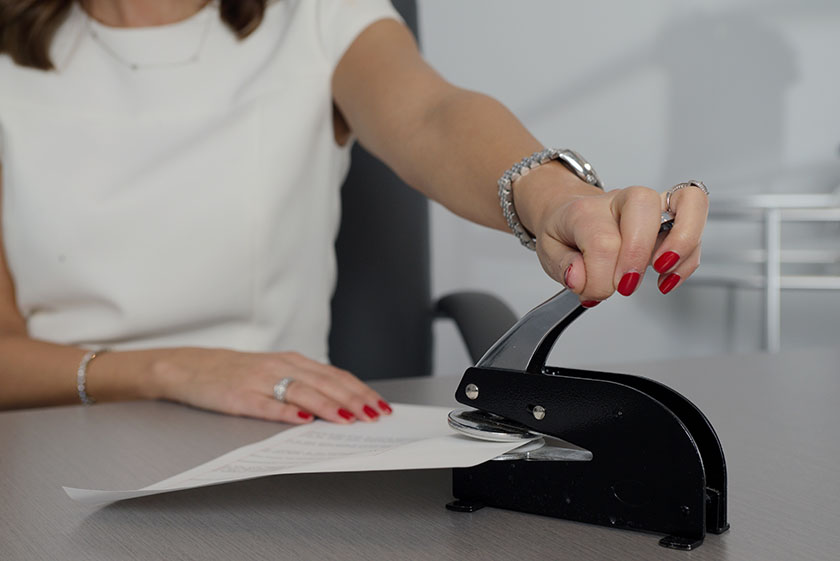
Translating and Notarizing Documents in Ecuador
Now you have both your Federal and State Background Checks Apostilled by their respective departments, and either 6 months of bank statements or proof of where the funds came from, it's time to get everything translated and notarized.
Step 1: Finding a translator
You'll ideally want to work with a translator who is local to where you'll be obtaining your notarizations because they will need to be with you at the time of notarization for signature recognition. Some notaries might offer both services in-house.
I've found that translators charge between $17 – $25 per page, however, given that some document pages only have like 30 words on them, they might be willing to offer you a package deal for everything after they see what you've got.
Unlike many other countries, the government of Ecuador doesn't officially license translators. However, the Judiciary Branch maintains a list of “peritos” (experts) that they certify in their respective fields who can perform work for government proceedings such as with courts, attorney generals office, prosecutors, etc.
Although you can work with any translator, the US Embassy recommends that you hire translators who are on that list, which you can search on their website. Translators on that list either have a degree or years of experience which qualifies them for the “peritos” status — but just like any list of experts, results may vary.
A few other ways to qualify a translator:
-
- They may be a member of the Association of Translators and Interpreters of Ecuador (ATIEC), which is somewhat equivalent to the American Translators Association (ATA) in the US. Becoming a member of ATIEC is a longer and more exhaustive process (and more expensive). They check the tranlators' experience, studies, and competence in both languages.
- They may have a degree in translation. For example, Karen, who I worked with, has a Bachelor's in Applied Linguistics with a mention in Translation from Pontificia Universidad Católica del Ecuador (PUCE). Other translators may have similar degrees.
- When students graduate with a degree in translation, their degree is registered with the National Secretariat for Higher Education, Science and Technology (SENESCYT), and they receive a code that clients can look up on the SENESCYT website to confirm.
I had my documents translated by a long time friend of mine, Karen, who splits her time between Quito and Cuenca. She gave me permission to share her contact info in this guide:
Karen Nasevilla
[email protected]
+593-992-616-508 WhatsApp
But since there's only one Karen, and she can't work with everyone, you may want to start your search for a translator on one of the databases above.
QUICK TIP: You can make the translators job easier by typing out the text from your documents and sending it to them via e-mail. They'll still need the original at some point, but your scanned copy along with a digital version of the text will expedite their process.
Step 2: Notarizing your documents
There are notaries all over the place, which you can find by Google searching “Notaria + City Name”. Usually they are all numbered like “Notaria 19”.
In total, I paid $42 to have all my documents notarized including my original apostilled background checks, the translated versions, and six months worth of bank statements. The notary also photocopied some info from Karen, my translator, like her ID and license, and included it with the notarized documents. She had to sign some documents as well.
One of the requirements to obtain my Investor's Visa is that I had to show 6 months worth of recent bank statements. These bank statements DID NOT have to be translated, but they DID have to be notarized. I had to login to my bank account from the Notary's office on their computer so that they could verify that the bank statements are real.
It costs money per page to have things notarized, and bank statements can get lengthy, but I learned that I only needed to provide the FIRST PAGE of each bank statement which included my name, bank account number, and available balance. I DID NOT have to include (or pay for notarization) the six pages of transaction activity that followed. However, I was instructed to remove the pagination from the bottom of the statements (ie: the text that read “Page 1/7”).
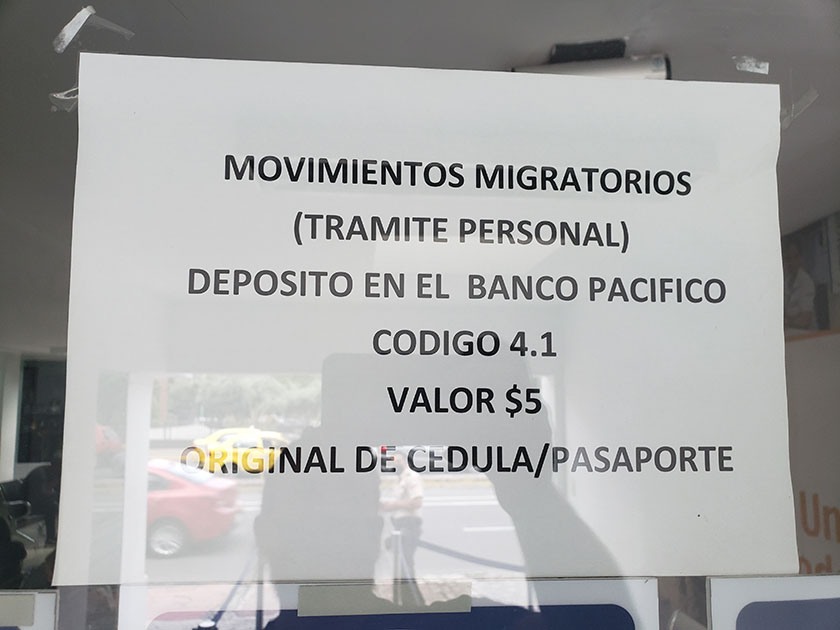
Movimientos Migratorios
One of the required items I mentioned at the beginning of this guide is a Movimientos Migratorios document which I obtained for $5 from the Migración Office in North Quito. Here's a list of every immigration office in Ecuador where you can obtain yours:
https://www.gob.ec/mdg/tramites/emision-certificado-movimientos-migratorios-especie-valorada-0
Paying for this document is a bit of a clunky process because the immigration offices don't accept the money directly. They instruct you to go to a bank nearby to deposit the funds. The bank then gives you a receipt which you bring back to the immigration office to finish the process and receive your Movimientos Migratorios document. This process is easy, but it requires a separate visit to a separate office from where you'll be applying for your investors visa.
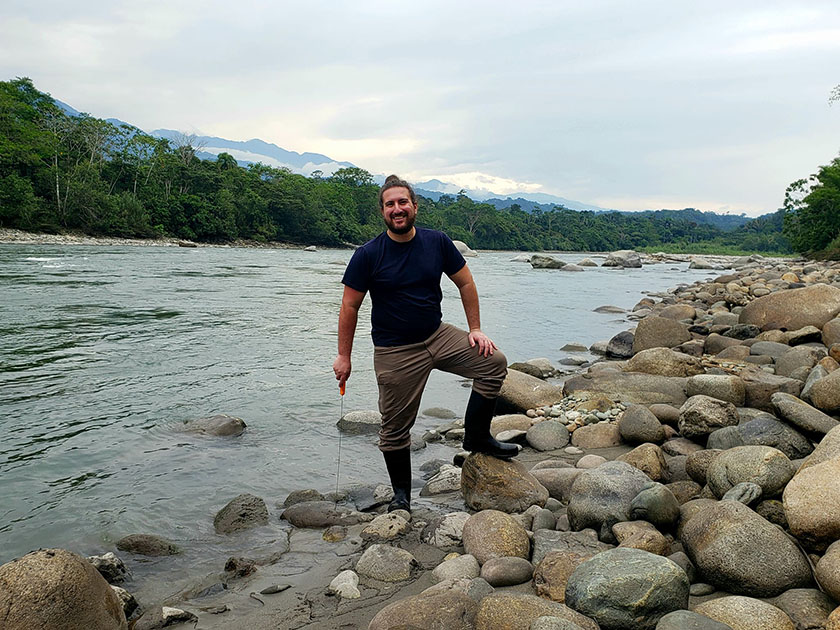
Apply for your visa
Okay, so you've finally obtained EVERYTHING you need to get your visa. Last step is to apply for the actual visa!
You'll need an appointment with Ministerio de Relaciones Exteriores, which can take several months. You'll probably want to go ahead and schedule an appointment when you start to obtain your federal background checks and transfer money, so that you can plan the rest of your timeline accordingly.
I can't speak for the other immigration offices in Ecuador, but the office I visited in Quito were wonderful and very accommodating. That being said, you've got to have all your ducks in a row by the time you arrive, or otherwise they'll accommodate you right out the door to obtain them.
I brought everything I needed to my appointment. People outside helped organize my documents and put them into a blue folder, which I purchased for $0.50. There's a whole community of street vendors that work outside the Minesterio de Relaciones Exteriores in Quito. People to make photocopies, sell you folders, make you lunch, and even “attorneys” (or so they say). So make sure to have small bills or coins with you for random expenses and photocopies at the time of your appointment.
When it was my turn to enter the office, the representative reviewed my documents to make sure I had everything in order, and then instructed me to walk over to the cashier to pay the $50 application fee, which I paid for in cash. I brought her back a receipt. She did some more entry on her computer, and then instructed me to walk back to the same cashier and pay $400 for the visa, which I also paid for in cash. And then I left the office.
About 20 minutes later, they called my name again, and my visa was ready! I signed a document and left with a digital Investor's Visa.

Conclusion
You have no idea how thrilled I was to walk away with my visa! After having messed up the process once already, I DID NOT want to screw things up again. I was at the end of my 6 months for the background checks, and I would've had to go through that process all over again too. I was very nervous walking into my appointment to obtain my visa, however, since I had all my documents in order, the process went smoothly.
Having the visa takes away a lot of pressure in my life of having to watch the clock and time my visits to Ecuador to fit within my 90 day tourist visa and extensions. Two years certainly flies by quickly, but it beats 90 days!
If you're ever in Tena, Ecuador, give me a shout a say hello!
Questions / Suggestions
I hope that this guide helps make your life a little easier when obtaining your investment visa in Ecuador. I did the best I could to write a comprehensive guide, but inevitably you'll have questions that I didn't cover. Feel free to post a question in the comments below, and I'll do my best to provide an answer, or to at least point you in the right direction.
Alternatively if you've been through this process and have suggestions on how to improve this guide, leave a comment below, and I'll update this post in the future with your suggestions.
Reader Submitted Questions
Below are copies of questions that I've received via e-mail, Facebook message, or live chat from readers, along with my answers. I'll keep on adding these FAQs as I receive them so that we can help future expats who find this post.
July 2022
WINSTON: Hi Paul, for a couple will a total investment of $42,500.00 cover both of us?
PAUL: Hi Winston – As far as I know, if you're married, then yes. One of you can file for the visa and the other as your dependent. You'd have to get more info from the Ministerio de Relaciones Exteriores about how to file with a dependent because I've not gone through the process. I'd assume that the spouse would need to go through the same background checks though. Please keep me posted about what you discover in regards to dependents and I'll add it to the guide for other folks with similar questions.
July 2022
DEWAYNE: Hi Paul, I have a question about the Ecuador Investor Visa. I understand that even with an investment at the right amount ($42,500), one is still required to have a verifiable monthly income of $425, is this correct? If so, my question is: can you substitute proof of assets (i.e., your net worth or money in your US bank account) in lieu of a monthly income? I’m only 51, and was thinking to retire early to Ecuador, but will not draw Social Security or any sort of pension until 65. However, my assets would more than cover the rest of my life in Ecuador. So, will they accept that in lieu of a monthly income? Thanks for your help – your site is amazing! Regards, DeWayne
PAUL: Hi DeWayne – Where did you read that the investment visa also requires income? I want to make sure that I am sharing the correct info on my guide, but I don't remember that requirement being a part of it. I had to show six months of bank statements, but that was to validate where the $42,500 came from. I don't think that had to do with my income. Please let me know where you found that income requirement and let's get to the bottom of it (because I'll update my post if so).
DEWAYNE: I believe this site is the first place I saw that, and I think I may have seen it on other sights too – but definitely here. You have to scroll down quite a ways.
PAUL: Hmm… I guess I am wrong. Thanks for bringing that to my attention. I'll update my guide accordingly.
I see now that the income requirements are listed in both their official documentations.
https://www.cancilleria.gob.ec/wp-content/uploads/2019/06/TEMPORARY-RESIDENCE-VISA-FOR-INVESTOR-Inversionista.pdf
https://www.cancilleria.gob.ec/wp-content/uploads/2019/06/TEMPORARY-RESIDENCE-VISA-FOR-RETIRED-Jubilado.pdf
Perhaps I just hadn't given it much thought since I'm employed at the moment.
I hope that you can find a way to work with or around that requirement.
DEWAYNE: No worries – glad I could be of help. Keep up the good work!
August 2022
MARK: I noticed that you specified to request for the FBI history report and state background check to be notarized in the application. I sent my FBI request in today online and there was no option to have the report notarized. I am wondering if I already did something wrong in the procedure. If you could email me any answers it would be greatly appreciated.
PAUL:If I'm remembering correctly I just wrote in the notes of the application a request to notarize the document upon its return. I had printed and mailed my application so I just did it that way, so I'm not sure if the online application had a notes area. You might be able to email them and request it after the fact. I would do so soon though before they start processing it.
MARK: Hey Paul, I got an email from the FBI informing me that they do not notarize background checks and that having them apostille is my only option. I am not sure why that has changed. Did you print your bank statements out yourself or did you get them from your bank? I am not sure if it matters.
PAUL: Mark – Nothing has changed. I apologize, but I told you wrong info — both in my guide and in my e-mail. When I originally wrote that guide, I had remembered incorrectly that I had both the federal and state background checks notarized. However when I read your e-mail, I went back and looked in my documents at the scanned copy of my federal background check and it was NOT notarized. Only my state background check was notarized. I apologize for giving you the wrong information (twice) and wasting your time e-mailing the FBI about it. I've updated my guide with the correct information.
Regarding bank statements — I printed them out myself. I only needed the first page of each statement which showed the balance (not the subsequent 7 pages that showed the activity and terms of service). The notary in Ecuador recommended that I remove the Page 1/7 from the footer, so I did that, and ended up with 6 pages, one for each month. Then, at the notary office in Ecuador, I had to login to my bank from their computers and let them verify that the paper statements in my hand matched up with the digital copies available on my bank website. That was a little uncomfortable, but they used an Incognito browser, did not save the password, and logged out in front of me. I later changed my password just to be extra secure.
Sorry again about the mis-info.
MARK: Paul you rock. I'm so glad to have someone along the way to make sure I am doing things right. I have a lawyer in Quito and talked to another immigration lawyer in Quito and both just dished out information about what you need and not the process whatsoever. You are a life saver!
This guide includes step by step instructions for U.S. Citizens on how to obtain your Temporary Investors Visa in Ecuador — a process that I recently completed. Questions? Suggestions? Drop a comment at the bottom of this post.
September 2022
October 2022
What next?
If you're excited about living in Ecuador, check out some the videos I published in this beautiful country, and follow Travel is Life on Facebook and YouTube.
Thanks for reading and happy travels!

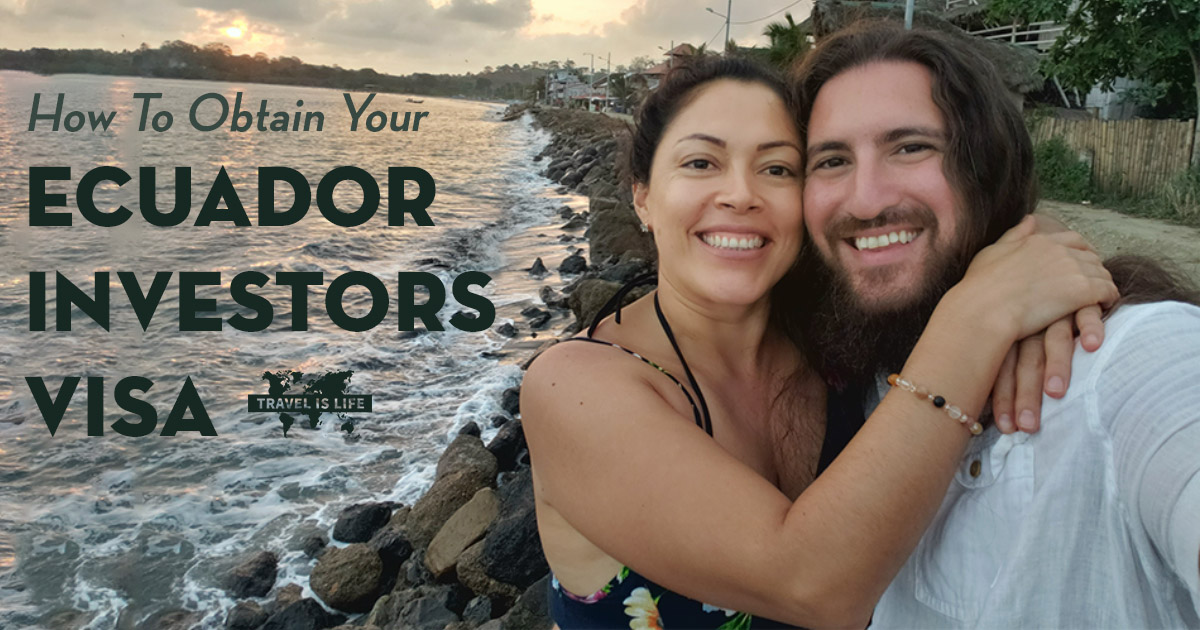
Hello! Great blog. Very helpful.
Just one possible correction, in my experience, translators do not need to be licensed by the Ecuadorian government. In fact, to my knowledge, no such license exists.
I’m an unlicensed translator (since none is available) who’s translated documents for immigration purposes here in Ecuador for years. No one’s ever asked me for a license.
You just need to get someone who can translate and sign at the notary vouching for the accuracy of the translation.
Hope this helps!
Nick – Thank you for that correction. I’ve updated the guide accordingly. I previously misunderstood what it means to be “perito” with having an official license, but I’ve corrected now. Thanks for your help.
hi, thank you for the details. I would like to know where you got the information of the qualified bank list.
and how about the photo? jpg or print?
Hi Alice – The information about the three banks came directly from a representative at the Ministerio de Relaciones Exteriores. Someone in a Facebook group recently told me that they were able to deposit their investment into a different bank other than the three mentioned in my guide. However, I’ve not been able to confirm with the Ministerio de Relaciones Exteriores that this is actually allowed. Just because it happened with one person, doesn’t mean that everyone could do it. So until I get confirmation from the government, I’m going to stick with what I was told by the government as my advice in this guide.
The photo needs to be printed on photo quality paper. Any photo or print shop that offers passport photos would be able to accommodate this. 2×2″ is a standard size.
Hi,Paul,thank you for the reply. I already put money into Jep, got the verification of my investment from the Central Bank of Ecuador.as you guiding, I already made an appointment, it’s almost two months later. So I just wait for my turn.
One more question, do I need upload the documents to the citas cancilleria now? Or just present all documents in person on the day of the appointment?
Thank you again.
I did not upload any documents prior. I merely showed up with the required documents to my appointment.
I’m not necessarily advising you to do the same. Perhaps it’d be better to upload ahead of time? Do they advise you in advance if you have all the required documents? That, I’m not sure of. If anyone else reading this can chime in, please do.
I don’t see a harm in uploading in advance. I just didn’t do it myself.
Good morning Paul,
When you apply for a investor visa, and if it is granted, can you then leave and re-enter as many times as you need? I am a US citizen, with a functioning company in Peru that needs my bi-monthly attention.
Thank you and warm regards,
Graham B. Tredray
Hi Graham – Yes, with your investor visa, you can come and go as you please, and you can stay in / out of the country as long as you’d like between visits (as long as your visa is active and renewed every two years). That was the big perk for me over residency, because I’m not able to hit the requirements of being in the country long enough to obtain residency.
Hi Paul. I really enjoyed your article. It was really in-depth and I learned some things I hadn’t known before.
I have a question I’m not sure if you can help me with, or not, but maybe one of your readers could.
My husband and I plan to retire in Ecuador in 2024. I’m torn as to which visa, the investor or the pensioner, would be best for us to apply for. We would love to move there a couple weeks after my husband retires. I know for the pensioner visa we would have to show 6 months of bank statements with our social security deposits, but we really don’t want to wait 6 months before leaving the US. We will be selling our house, so waiting six months would be a hardship.
We would have the money to do the investor visa, and I realize that we would still need to provide six months of bank statements, but would it matter if they showed my husband’s salary as opposed to our social security checks?
Thank you so much for any help you can give me.
Hi Lorrie – Congrats on the upcoming move. 2024 will be here before you know it.
It’s tough to chime in on questions like this. I’m no expert, things can change in two years, and I’ve heard that “requirements” differ depending on who’s processing the paperwork. So I’d hate to say “that’d be fine” and set you down the wrong path, because I don’t know how I could guarantee it.
I have two thoughts to share though:
1) Don’t forget that you can come to Ecuador as a tourist for 3 months and then request a 3 month extension. So you can technically be here as a tourist for 6 months (collecting your pension) before applying for either visa.
2) You’ve got plenty of time in between now and 2024. Can you work on getting your visas in the meantime, while in the USA, through your local consulate office? Perhaps you could already have your pensioners or investors visa before you move here.
If anyone reading this has additional info to share that would help Lorrie, feel free to chime in. Thank you.
The income required for an investment visa is 425 USD, the same as the min. wage .
Great, thank you for letting me know.
> so that you don’t have to go back and forth twice like me
Would you mind sharing why you had to go back-and-forth twice so that we don’t make the same mistake?
Also, why is it necessary to go to the US at all? Is it not possible to get all the required documents while in Ecaudor? And wouldn’t it be cheaper?
Paul,
I just found your site. So much great info. I am moving to Archidona and am starting the process of getting my Visa, but decided to use an immigration lawyer. I can’t move down full time until I have my visa and ship some stuff down and sell my home in the States.
I do have a question for you, my Spanish is not good, not many people to practice with where I live. Is there a place or do you recomend someone to do lessons to get me conversational quicker?
Congrats on the upcoming move, Danica. That’s exciting. Give us a shout when you get to Archidona. We are just 15 minutes away in Tena. (Well, currently in Cuenca for a few months to have a baby, but normally in Tena.)
I can’t be much help to you about the Spanish lessons. I know for certain that there are Spanish lessons in Tena because I’ve heard about them through the grapevine, and I’d imagine there might be a small school or private lessons available in Archidona too, but I’m not personally familiar with any particular school or teacher. Happy to spread the word when you get here and see if I can help find someone for you though.
In the meantime, don’t overthink how to study. Just study. Use Duolingo or another app for a short daily lesson. Translate a song from Spanish to English or vice versa each day. Buy a young adult level book in Spanish (ie: easy to follow story) and read one page at a time, translating the words you don’t know into English and writing them underneath in the book. Google search for “English / Spanish language exchange” and you’ll find some platforms to talk with other people online who are also learning. Pick a category like numbers, directions, kitchen, food, travel, etc and write / translate 20-30 common words or phrases for that category.
The only wrong way to study is to NOT study at all! I’ve watched people overthink it for years in South America, waiting for that perfect program or opportunity for lessons, when they could’ve been dedicating 30 minutes a day toward self-studying and had made huge improvements in the meantime. Don’t be that latter person!
Where did you find the jurisdictions for Ecuadorian Consulates in the US? I couldn’t find it in the site you linked.
Hmmm… doesn’t look like they explicitly display the info anymore on the site. However I would start by contacting the one closest to you and asking if they cover your area. Here’s a link for quick reference if you’re from the US: https://www.cancilleria.gob.ec/map_maps/estados-unidos/
I did not have my background checks apostilled from the US. Had I of come prepared with that, I would have been able to do everything in one visit.
Algo how can you have an address with bills to show jep if you don’t even have your visa yet?
You can rent a place or obtain a mailing address easily without being a resident or having a visa. In my case, I used my girlfriend’s address, where I had been residing while under a tourist visa.
Hi. When using the investing option you gave an example of investing 45k. Do you have to invest 45k every two years or just once?
Thanks
No, it’s a one time investment. Every two years you’d need to renew the poliza and commit to another 2 years, but it’d be with the same $45k each time, not an additional $45k. The amount will certainly go up in time, but as long as you renew your visa on time, you should be able to continue with the same $45k.
For example, I have friends who obtained an investors visa when the amount was $25k several years ago, and they continue to renew every two years at $25k. They did not have to increase their investment amount when the minimum raised to $42,500 or later to $45,000.
Who taught you how to navigate the https://www.bce.fin.ec/ website? That’s complicated!
LOL. And I feel like it changes all the time and the info is always in a different place. Helps having an Ecuadorian girlfriend who can read the website better than me!
Hola – I was arrested- no conviction. Apparently I need to show I have no outstanding fees. (This was over 30 years ago)!
Are you familiar? Do you know how to obtain?
No clue on that one, sorry. Perhaps a proof of zero balance from the court house?
Last check the investment visa does require proof of sustenance, if you are in Ecuador, a credit card with a credit limit of 6 months of the minimum wage will suffice.
Thanks Ben
Hi Paul,
I really liked you posting (top notch) on this matter.
Your posting had inspired one of my friends to go that route in applying for I.V. this year in May.
Been traveling the world since 1985 and spend time in many countries,but after visiting Ecuador few times,at the end of 2022 I decided to make Salinas,Ecuador my home base.I did most of all the paperwork necessary at a Ecuadorian Embassy in Europe (got a EU passport).There,a lady working on my case suggested that since I don’t speak spanish,for me will be easier to hire a real lawyer to do the leg work (payed him $2 000).Had to go with my lawyer few times to GYE and once to Quito!All that mambo jumbo with regards of transfering funds,waiting,the fees,etc. was solved by bringing cash into Ecuador and a letter from my bank,along side of a banking statement for past year.With my lawyer present,I opened an account at Banco Guayaquil and made a large deposit!For your readers,you have to declare all that cash leaving your country and every time you enter any other country,otherwise your money can be confiscated (for money laundering)!By the end of April 2023 I had all boxes checked.Got a 8.5% (JEP) intereset on my funds,but also invested in a 2 bdrm condo that will be ready this August.
Left Ecuador last year in April,but I’ll return (HOME) next month!
That’s awesome Steve! Wishing you the best at your new home in Salinas.